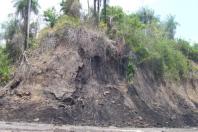Uzbekistan
The plot:
Uzbekistan is a traditional oil producing country whose highest production years were as a part of the USSR. With current conventional reserves in steady decline, oil shale kerogen mining has been explored and recent announcements have been made that would situate Uzbekistan as the first Central Asian republic to move into commercial oil shale mining and likely be one of the first half dozen in the world. This would take place in a country already devastated by decades of environmental mismanagement under both former Soviet planning and since independence from Moscow.
The details:
In 2010 Uzbekistan announced their state gas company Uzbekneftegaz had teamed up with, among other companies from Japan, Japan Oil, Gas and Metals National Corporation (JOGMEC). JOGMEC has conducted in-situ Steam-assisted Gravity Drainage (SaGD) research in Alberta, Canada along with JACOS (Japan Canada Oil Sands Limited) at their Hangingstone tar sands operation south of Fort McMurray.
Two deposits of oil shale, both in the Navoi region in the north, have now been opened for mining after the construction of an extraction plant for synthetic oil production. Daily production projections not made public. By the end of 2013 companies involved are expecting the production to be commercial.
Uzbekistan is estimated to have 47 bn tonnes in place of kerogen oil shale, or approximately 300 bn bbl of synthetic oil, of which industry estimates are usually ten percent recoverable.
Uzbekistan is deep into conventional oil decline but seeks not only kerogen oil shale mining, but also potential gas to liquids production in the near future. These destructive developments would take place in a former Soviet Republic left with the vast disappearance of fresh water supplies and the remaining potable water becoming more acutely toxic through the overuse of petrochemical fertilizers in large scale agriculture since the 1930's.
Irrigation of the Aral Sea for cotton and similar agriculture began the process that now has seen the disappearance of more than half of the size and 2/3rds of the volume, according to the US Library of Congress. This has left behind exposed salt that has since been swept in salt storms as desertifiation spreads.
Even the majority of underground water aquifers have been noted to have industrial contamination leaving the drinking water already unsafe for the majority of the Uzbek population. Desertification from water destruction has also led to the spreading of contaminants into the air as well across the country.
All of these factors are already daily life before the advent of any new oil and gas schemes in the country.



